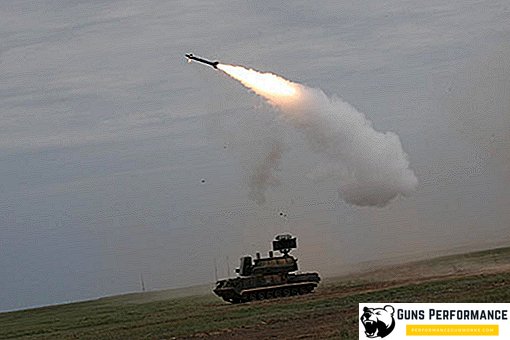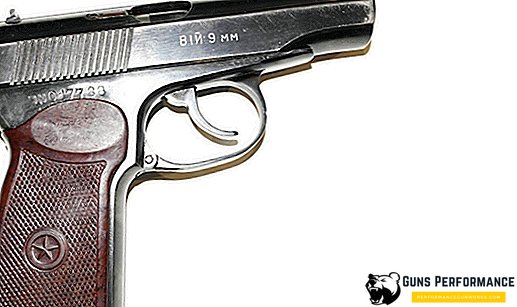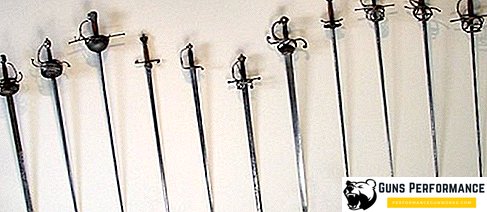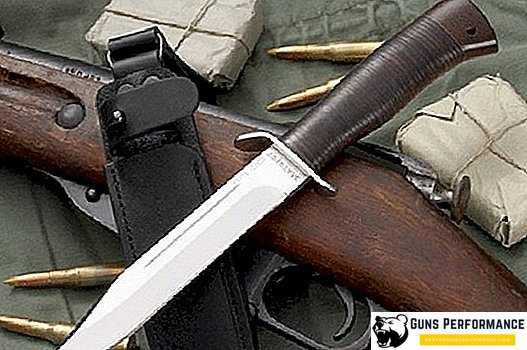The very name of such a formidable weapon as a one-time grenade launcher may indicate its possible use for making only one single shot. In the future, with what remains of the grenade launcher are treated as with an ordinary spent sleeve, which has served its own and does not represent any interest for subsequent use.
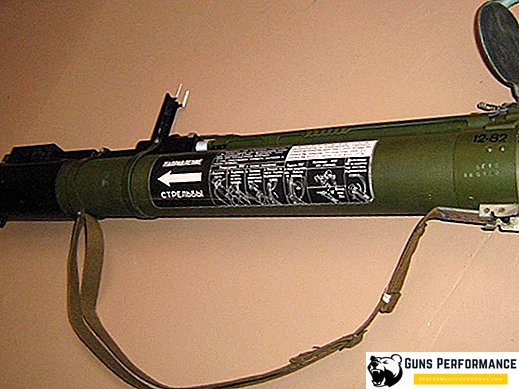
All this is determined by the design features of the grenade launcher, which is designed for single use, as well as the technological process in which the equipment of its grenade is carried out by the manufacturer with the further sending of weapons in a fully charged state for the needs of the army. In these types of weapons, starting firing devices and ammunition are combined. They are essentially disposable grenade launchers (or systems).
The history of disposable RPGs
In the Soviet Union, work on the creation of a single-use grenade launcher complex began to be carried out since 1968. At that time, similar systems had already been adopted by the American and Swedish armies. However, the prototypes of all domestic and foreign designs that were developed were German grenade launchers used at the end of the Great Patriotic War. These were the well-known "Panzerfaust", the firing range of which ranged from 30 to 90 meters. The Germans used them for the successful elimination of tanks, especially in urban hostilities.
In contrast to the Panzerfaustam, the newest disposable grenade launchers were developed in a different, reactive design principle. The firing range increased, both accuracy and accuracy of shooting improved, and the power of grenades increased. In addition, the tactical application of these systems, in contrast to the period of the end of the Second World War, basically did not change.

Once-used grenade launchers are non-standard (non-portable) individual weapons, designed primarily to combat armored vehicles, which are tanks, armored personnel carriers, self-propelled guns and infantry fighting vehicles. Moreover, they can be used in the suppression and destruction of enemy manpower, which is located in any type of shelter, structure or building.
The principle of the RPG 22
With all the anti-tank jet grenades that were in service with the Soviet Army, work was carried out with a similar basic scheme. All such disposable grenade launchers included: launchers, which are used for saving, transporting grenades, producing target shots, directing flights of grenades and, directly, rocket grenades, placed in the pipes of launchers. Sighting devices and firing mechanisms are attached to the starting devices. With mechanical diopter-type sights, you can set ranges to targets, handle adjustments for environmental temperature conditions, and conduct aimed firing in an environment with insufficient visibility.

The trigger mechanisms serve to nadkol primers-igniters in cocked states (in combat positions) and ensure the safe handling of disposable grenade launchers.
The jet grenades themselves (like the RPG-22 grenade) consist of warheads and jet engines. The warheads are equipped with warheads with shaped charges, lined with metal funnels and head-bottom fuses. Piezoelectric fuses, shock-instantaneous actions, safety types with long-range arming and self-killer. They consist of head and bottom parts and ensure reliable operation of head parts at meeting angles with barriers up to 70 degrees.
The heads of the fuses have piezoelectric elements, which, when meeting with obstacles, produce electric current. The bottom parts of the fuses have spherical electric detonators, which with the supply of electric current from the piezoelectric elements and cause breaks in combat units. In case of electrical circuit failures or blunders, self-destructions of fuses occur with the help of pyrotechnic self-killers.

Solid propellant jet engines are used to communicate initial speeds to grenades and have pen stabilizers. In addition, the energy of the powder gases gives grenades rotational motion, so that the weight of the grenades does not affect the accurate and heap shooting. Jet engines work only within the boundaries of launching devices, and this prevents possible shooters from injuring from unburned charge particles and powder gases.
All launchers have reminders of how to handle weapons, they briefly describe shooting methods with the definition of security measures. Preparation of any, including the RPG-22 "Netto" for its intended use includes bringing the launchers from marching to combat position.
RPG-22 "Net": device and performance characteristics
Grenade - RPG-22 "Netto" for the first time was demonstrated at the 1979 field trials. A new model appeared, due to the insufficient level of armor penetration of the RPG-18, and was caused by the need to build single-use grenade launchers and single-pipe structures.
Launchers in the RPG-22 "Netto" are thin-walled tubes, with a telescopic bundle of nozzles, which are needed in order to extend the muzzle parts of the tubes of the barrel for the b / position. Tube with nozzle in expanded form is a barrel PU. The material for the trigger tubes served as fiberglass, and for the nozzle - polyamide.

Before being transferred to the combat position, the RPG-22 starting device is locked using the front and rear covers. To transfer the RPG-22 grenade launcher from the marching to the combat position:
- The check is pulled out and the nozzles are pushed to the front. The front cover will fold down, the front sight will be free of the casing, under the influence of its own spring it will fold up and become upright;
- Traction is shifted all the way back. The back cover under the action of the spring with the elastic forces of the loop turns on the axis and drops from the starter;
- Turn the fuse until it stops up. Trigger the trigger.
Fly has scoring marks with the numbers "5", "15" and "25", which corresponds to the range when shooting at 50, 150 and 250 meters. Mark "15" has a range of projections. The distance between them corresponds to the projection of the width of the tank with a range of up to 150 meters. When shooting in conditions of insufficient visibility up to 100 meters, the front sight has a protrusion, and the safety post is slotted. On the safety strut, to which the diopter is attached, there are signs "-" and "+". They are necessary to carry out temperature corrections at shots to ambient temperature.
| RPG-22 "Netto" grenade launcher: performance characteristics | |
| Length in positions: | |
| - marching | 755 mm |
| - Fighting | 850 mm |
| Caliber | 73 mm |
| Weight | 2.7 kg |
| starting speed | 133 m / s |
| Direct shot range | 160 m |
| Armor penetration level | 200 mm |
Jet charges of engines are charges of "brush types" from gunpowder. They are represented by bunches of tubular powder, pinched from the front. With such designs of charges, single impulses increase, and the moment of operation of engines decreases. The RPG-22 grenade in its head part is equipped with the OXFOL explosive.
Transfers from martial law to marching are not provided. Unused grenades are discharged when firing in the direction of the enemy.
The successful ground tests and field trials of 1981 gave impetus to the fact that the RPG-22 grenade was adopted in service in the Soviet Army. However, by that time, or rather back in 1980, they had already established themselves with the tactical and technical requirements for the development of reactive anti-tank grenades with even more increased efficiency.



